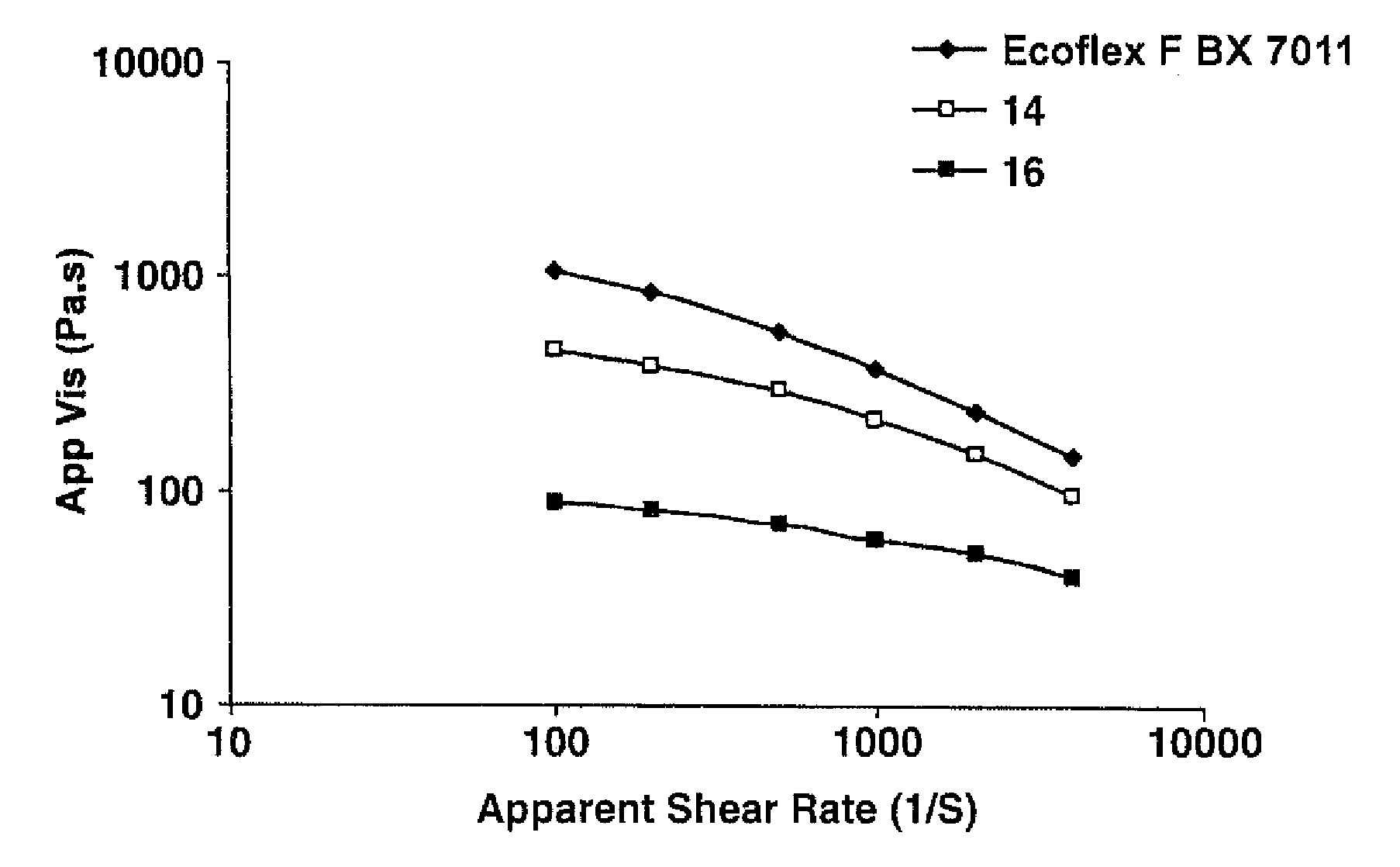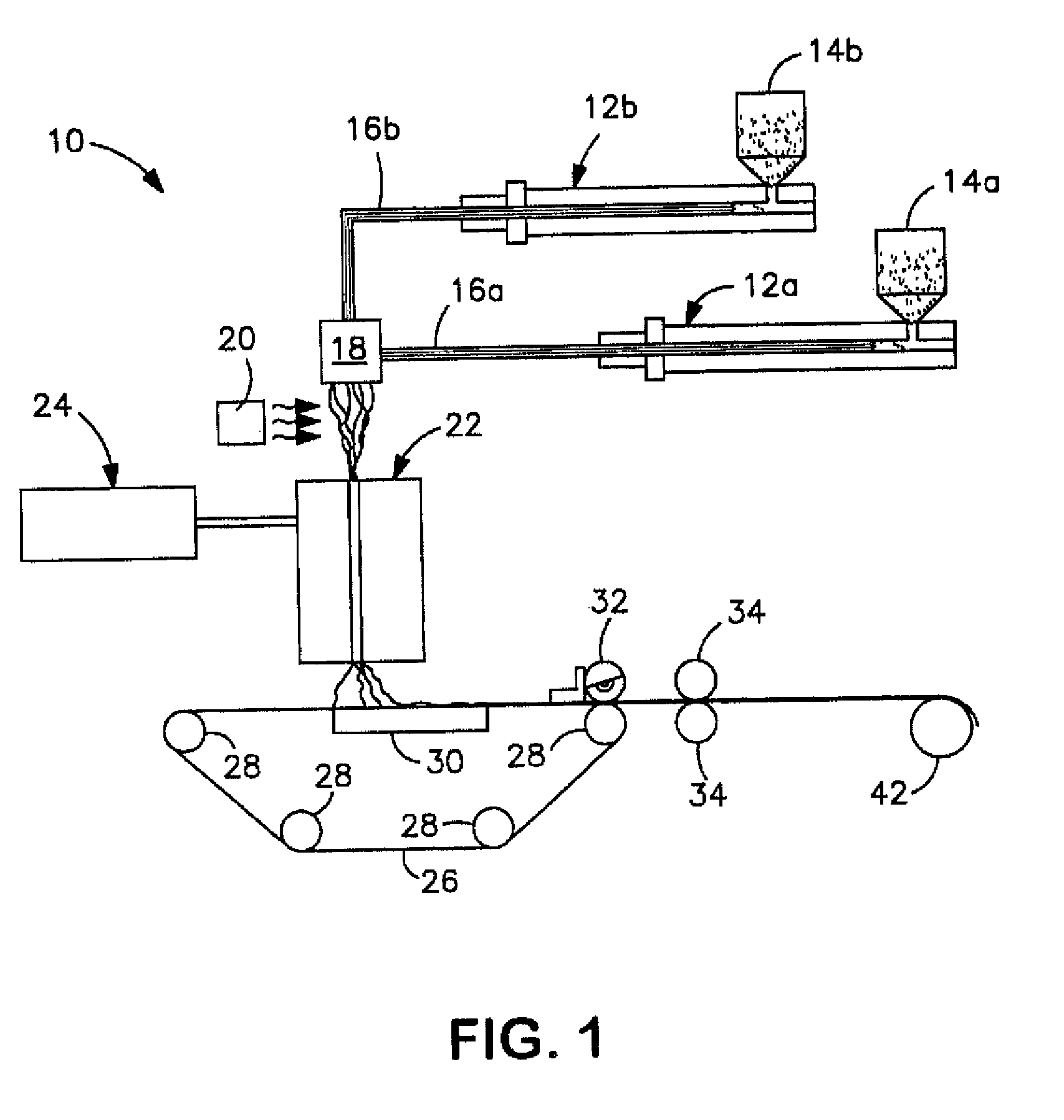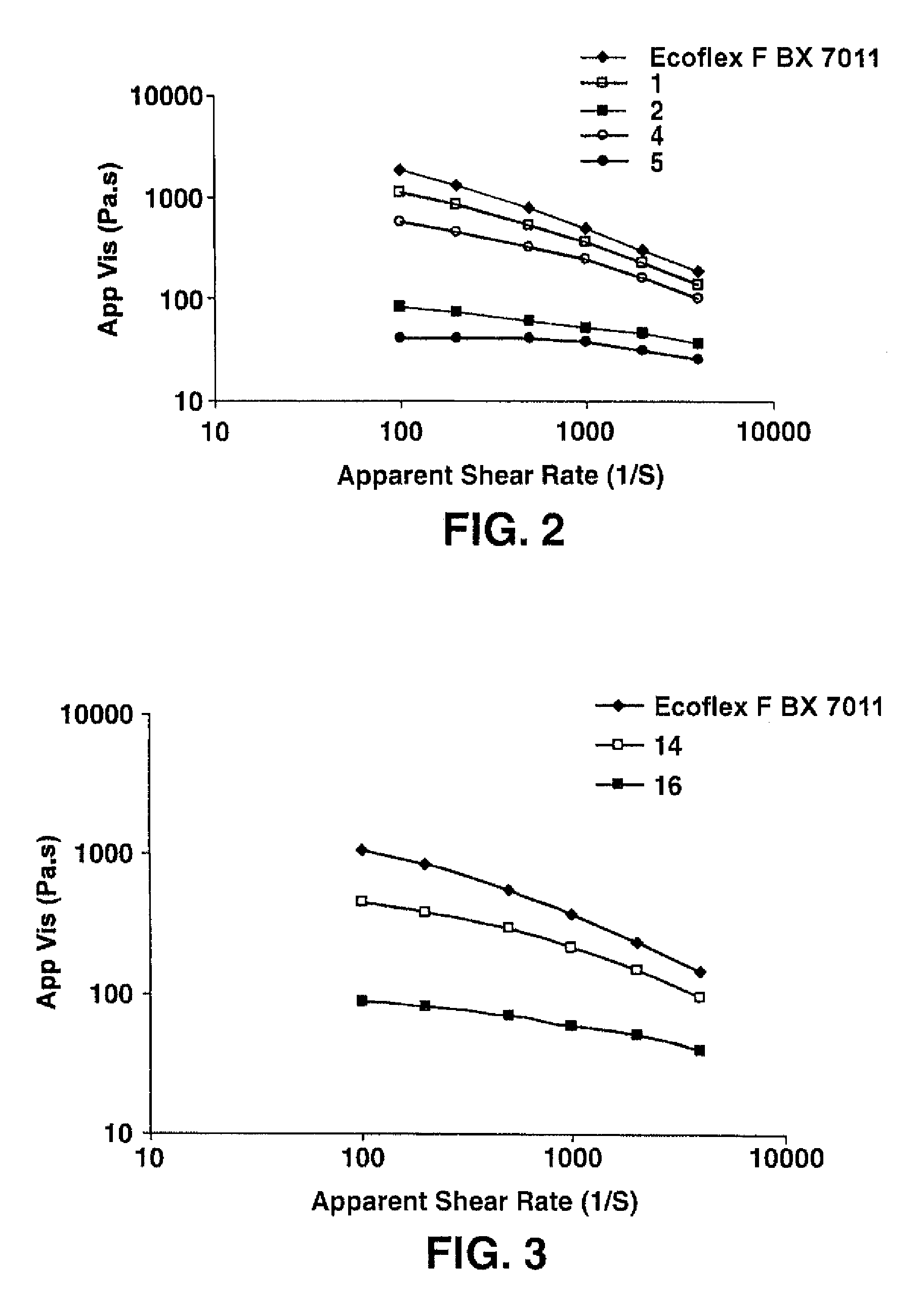Multicomponent biodegradable filaments and nonwoven webs formed therefrom
a biodegradable filament and multi-component technology, applied in the direction of weaving, melting spinning methods, other domestic articles, etc., can solve the problem that the conventional aliphatic-aromatic copolyester is not typically suitabl
- Summary
- Abstract
- Description
- Claims
- Application Information
AI Technical Summary
Problems solved by technology
Method used
Image
Examples
example 1
[0095]An aliphatic-aromatic copolyester resin was initially obtained from BASF under the designation ECOFLEX® F BX 7011. The copolyester resin was modified by melt blending with a reactant solution. For Samples 1 and 4 (see Table 1), the reactant solution contained 89 wt. % 1,4-butanediol and 11 wt. % acetone. For Samples 2, 3, 5, and 6 (see Table 1), the reactant solution contained 87 wt. % 1,4-butanediol, 11 wt. % acetone, and 2 wt. % dibutyltin diacetate (the catalyst). The solution was fed by an Eldex pump to a liquid injection port located at barrel #4 of a co-rotating, twin-screw extruder (USALAB Prism H16, diameter: 16 mm, L / D of 40 / 1) manufactured by Thermo Electron Corporation. The resin was fed to the twin screw extruder at barrel #1. The screw length was 25 inches. The extruder had one die opening having a diameter of 3 millimeters. Upon formation, the extruded resin was cooled on a fan-cooled conveyor belt and formed into pellets by a Conair pelletizer. Reactive extrusio...
example 2
[0098]The modification of ECOFLEX® F BX 7011 by monohydric alcohols was demonstrated with 1-butanol, 2-propanol, and 2-ethoxy-ethanol as examples of monohydric alcohols. The experimental set-up was the same as described in Example 1. The process conditions are shown in Table 3. Dibutyltin diacetate was the catalyst used. As shown in Table 3, the torque decreased as monohydric alcohol was fed to the extruder. The torque was further decreased as monohydric alcohol and catalyst were both fed to the extruder.
TABLE 3Reactive Extrusion Conditions for modifying Ecoflex F BX 7011 on a USALAB Prism H16 with monohydric alcoholsSampleTemperature ( ° C.)Screw SpeedResin RateReactantCatalystTorqueI.D.Zone 1, 2, 3-8, 9, 10(rpm)(lb / h)(% of resin rate)(% of resin rate)(%)F BX 7011901251801251101502.500>1007901251801251101502.53.4%, 2-Propanol0908901251801251101502.53.4%, 2-Propanol0.1809901251801251101502.53.6%, 1-Butanol07210901251801251101502.53.6%, 1-Butanol0.15411901251801251101502.54%, 2-Ethox...
example 3
[0101]Modification of ECOFLEX® F BX 7011 with 1,4-butanediol was performed as described in Example 1 using titanium propoxide (“Ti-P”), titanium butoxide (“Ti-B”) and titanium isopropoxide (“Ti-IsoP”) catalysts. During the reactive extrusion process, the torques of the extruder were moderately decreased with the addition of only 1,4-butanediol, and further decreased with the addition of the titanium catalysts. The process conditions are shown in Table 5. The resulting modified copolyesters have hydroxybutyl terminal groups.
TABLE 5Reactive Extrusion Process Conditions for modifying Ecoflex F BX 7011on a USALAB Prism H16 with 1,4-butanediol and titanium catalystsSampleTemperature ( ° C.)Screw SpeedResin Rate1,4-butanediolCatalystTorqueI.D.Zone 1, 2, 3-8, 9, 10(rpm)(lb / h)(% of resin rate)(ppm of resin rate)(%)F BX 701195145180130100150300>100139514518013010015032085149514518013010015033.5075159514518013010015032400, TI-P69169514518013010015033.5700, Ti-P48179514518013010015032400, Ti-B...
PUM
| Property | Measurement | Unit |
|---|---|---|
| Temperature | aaaaa | aaaaa |
| Temperature | aaaaa | aaaaa |
| Temperature | aaaaa | aaaaa |
Abstract
Description
Claims
Application Information
 Login to View More
Login to View More - R&D
- Intellectual Property
- Life Sciences
- Materials
- Tech Scout
- Unparalleled Data Quality
- Higher Quality Content
- 60% Fewer Hallucinations
Browse by: Latest US Patents, China's latest patents, Technical Efficacy Thesaurus, Application Domain, Technology Topic, Popular Technical Reports.
© 2025 PatSnap. All rights reserved.Legal|Privacy policy|Modern Slavery Act Transparency Statement|Sitemap|About US| Contact US: help@patsnap.com



